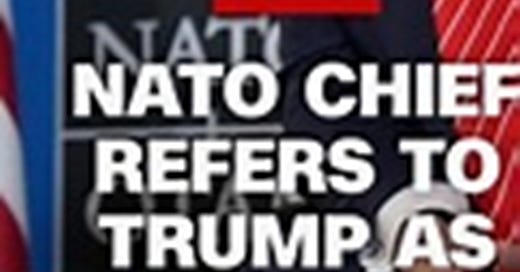The NATO Summit: A Theatre of Weakness Masquerading as Unity
“Kneeling to Trump, dodging Ukraine, and burying NATO’s credibility under vague promises.”
Published: 27 June 2025
This week’s NATO summit was meant to reinforce the West’s resolve in an era of rising geopolitical tension. Instead, it exposed the hollowness at the heart of the alliance. Far from demonstrating unity or vision, the summit revealed a NATO adrift—dependent on American whim, paralyzed by economic realities, and increasingly disconnected from the electorate it claims to protect.
The spectacle was almost tragic. European Union leaders, confronted by the specter of a second Trump presidency, bent the knee. Their message was unambiguous: Please don’t leave us. The Donald—neither president nor private citizen in any official capacity—was treated as NATO’s uninvited but all-powerful guest. In return for vague affirmations that “Article 5 still stands,” Europe pledged to raise defense spending to 5% of GDP by 2035.
It was an offer made not in strength, but in desperation.
This lofty commitment—5% of GDP—is economically and politically untenable. Most European states are already straining under inflation, social unrest, and mounting debt. Governments are slashing social services, not expanding military budgets. Voters will not accept this quietly. Political leaders know this, which is why the pledge is pushed safely into the distant future—a future in which the politicians who made the promise will no longer be in power.
Trump, for his part, offered nothing concrete. His vague reassurance that NATO remains relevant was devoid of specifics. He reiterated support for Article 5, but made no commitment as to how or when it might be invoked. Left unsaid was this: under Trump’s leadership, Article 5 is not a guarantee—it’s a political calculation. The credibility of NATO’s deterrent was not reinforced; it was left in limbo.
Even more disturbing was the silence surrounding Ukraine. The country at the center of Europe’s largest war since 1945 was barely mentioned. Its path to NATO and EU membership, once central to transatlantic policy, now looks increasingly blocked. Recent statements by Russian officials—Foreign Minister Lavrov and former President Medvedev—make clear that Moscow will actively veto any Ukrainian accession, and the West appears to have quietly accepted this.
The summit’s most revealing outcome was the near-complete political fusion of the EU and NATO. Long a political and economic union, the EU now emerges as a de facto military actor. The line between NATO and the EU has all but vanished. Both institutions now pursue a unified strategic vision: Russia is the enemy, and the continent must prepare for war in the coming years.
But this fusion raises troubling questions. Who controls Europe’s future military doctrine? Elected national governments? Brussels technocrats? Washington’s political tides? And who speaks for the people of Europe—those being asked to bear the costs of this strategic pivot?
Make no mistake: this summit did not project strength. It projected fear, fatigue, and a staggering lack of leadership. NATO remains, for now, but not as a confident alliance of equals. It is a fragmented institution, bound together by fear of abandonment and internal decline. The West has stumbled into a new era, not with clarity and courage, but with shadow-boxing and strategic ambiguity.
The world was watching. And what it saw was not reassuring.
The author is an independent historian and commentator specializing in European memory, conflict, and reconciliation.




